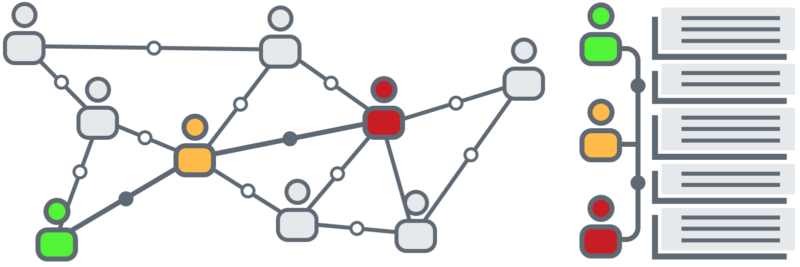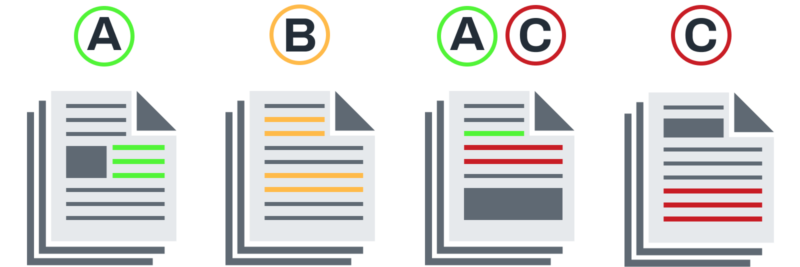This project is described to the extent to which is possible as some of its details are confidential.
“Can we use this one here?”
The problem: The content team stumbles upon a term that is not very clear or straightforward but seems to convey perfectly what needs to be communicated. Should it be used? Should the team search for a new word even if it risks the clarity of the message?
As we all know, words (even if used properly) are charged with emotion and can really affect the way users perceive us. Getting a general sense of the use of words in context can be really helpful for Content Managers and UX writers. Can the use of a single term or group of terms be analyzed in a relatively quick way to determine the convenience of its use?
1. Sourcing words
The first and most important part of this project was finding a convenient database to work from, a good source of words if you will. Understandably, the list of words had to be recent, cheap, easily accessible and authentic. After all, these kinds of projects tend to be urgent because other processes depend on them, but they have to be taken very seriously. I decided to harvest data from Twitter using software that allowed me to collect tweets that mentioned the term in question.
Twitter is a very convenient resource for this kind of project. The data is public, easily obtainable and immediate. However, it is important to keep in mind that the tweets will only be a snapshot of the historical usage of the term, it will tell us how is the term used only during the time the data is collected.
3. Frequency analysis
The tweets were then downloaded to a spreadsheet in order to conduct different analyses. The first one of these was word frequency. The purpose of this analysis was to determine what were the words most commonly associated with the term I was trying to investigate. There are many apps that allow for the production of word frequency lists, I personally prefer the word tree format, but it is really up to each researcher.
The frequency of these other words gave me the context in which the term is being used, allowing me to get a quick glimpse of the use but also allowing me to find a place to continue the exploration. This is necessary because having a lot of data is only useful if one can produce a response to the use of a term with enough confidence, and for that, contextual close reading is necessary.
3. Other methods
To give an extra layer of information to the question, I conducted a quick sentiment analysis (more about the creation of this resource here). These kinds of analyses are not perfect but tend to be updated often to reflect the true sentiment of the words. Finally, I used a visual thesaurus to show the associations that the term had.
So, guess what? In the end, the Content team had their answer: Yes, you can use this one here. This project took me around 6 hours between collection, analysis and reporting.




